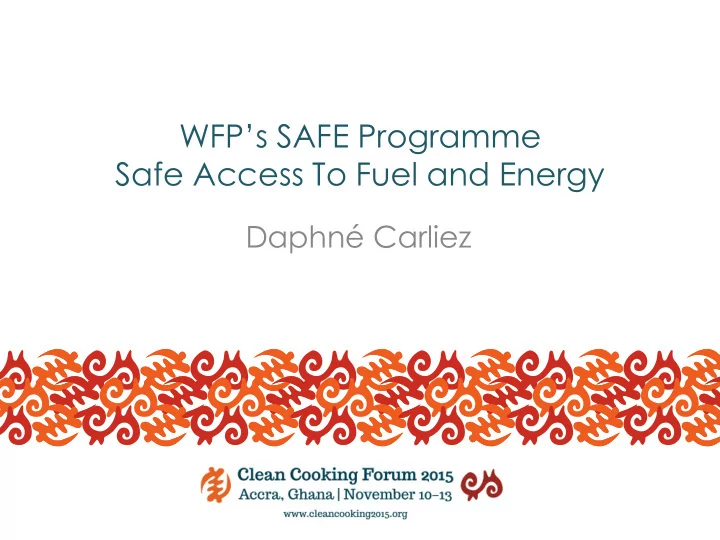

WFP’s SAFE Programme Safe Access To Fuel and Energy Daphné Carliez
WFP’s SAFE focus: Saving lives to ensure food can be cooked to meet nutritional needs in emergencies Reducing protection and health risks for women and children cooking food in unsafe settings Mitigating environmental degradation to reduce climate change and food insecurity Restoring and rebuilding lives and livelihoods in post-conflict, post-disaster & transition settings.
Access to energy is directly linked to food security How is the SAFE initiative relevant to WFP's work and mandate? Food needs to be cooked………….. As the world’s largest humanitarian agency fighting hunger worldwide, WFP has a duty to make sure its assistance is as nutritious as possible and conducted with safety and dignity. This includes making sure food can be cooked.
WFP’s SAFE 7 STEPS OF STOVE SELECTION 1. Usability : consider cooking habit, food type, and cooking practices, indoor cooking and outdoor cooking; 2. Fuel type : consider what is available, do not add extra pressure on the available limited resources; 3. Economics : costs of the stove investment / cost per capita; 4. Social Economic status of the household : categorize the population and needs for cooking 5. Technology : different geographic locations needs different suitable technology; 6. Scalability : in areas where populations are scattered it will be hard to monitor and provide support, identify what type of stove can be assembled in that area; 7. Acceptability : identify the level of acceptance within the community to actual use that particular technology by interviewing communities and testing on a small scale.
Procurement Process EOI, Share Selection expression tender and of panel of interest RFP
Daphné Carliez Daphne.carliez@wfp.org
Recommend
More recommend